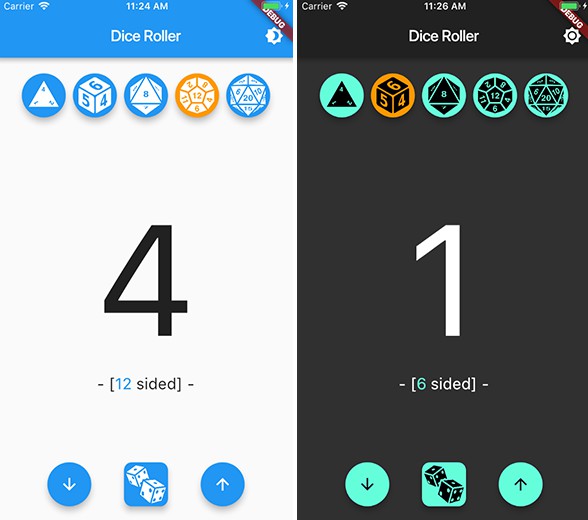

Write business logic to add and remove products into the cartItems and emit the respective state. External events, such as changes in network connectivity, changes in sensor readings, etc., look like this: class RotateEvent ' An event can be fired from anywhere, such as from a UI widget. Important BLoC conceptsīefore we dive in, let’s review some basic BLoC concepts and terms so we’re all on the same page. This facilitates the reusability of the code. Since the BLoC handles the rotation and changing color operation, both operations can be performed on any widget. Similarly, the circle widget changes its color when the Change color to Red button is clicked. The triangle widget rotates itself upon receiving the RotatedState from the BLoC. Take the simple example below:Īs soon as the Rotate 90° button is clicked, the RotateEvent is dispatched to BLoC and the state representing the rotation, i.e.

In simple terms, BLoC accepts a stream of events, processes the data based on events, and produces the output as states.
Bloc observer flutter code#
Writing code in BLoC makes it easier to write and reuse tests. What is BLoC?īusiness logic components (BLoC) allow you to separate the business logic from the UI.
Bloc observer flutter how to#
We’ll explain what BLoC means and demonstrate how to implement any feature in BLoC. You may ask your self why do I ever need such a package Well, to. In this tutorial, we’ll focus on using the BLoC design pattern for state management in Flutter. 1 A few months ago, Felix Angelov released a new great package that adds the concurrency functionality to his bloc library. There are myriad state management solutions available for Flutter, including Provider, InheritedWidget and InheritedModel, Redux, BLoC, GetIt, MobX, Riverpod, etc. Staying on top of everything requires an effective state management technique. There are many other factors you should also consider while developing a Flutter app, such as architecture, scalability, readability, complexity, etc. But while setState can be your best friend, it’s not a good idea to depend on it solely. In Flutter, you can manage the state of your app just by using setState. All UI components should be aware of the state of the app at all times. With multiple components, it’s crucial to implement effective communication between them. When working on a Flutter app, you might encounter the need to split a large UI component into several smaller ones to improve the readability of the code. State management in Flutter using the BLoC design pattern Over the last seven-plus years, I've been developing and leading various mobile apps in different areas. / A CounterCubit which manages anint as its state.Pinkesh Darji Follow I love to solve problems using technology that improves users' lives on a major scale. onChange is called right before a state change occurs and contains the current and next state. State changes in cubit begin with predefined function calls which can use the emit method to output new states. The current state of a cubit can be accessed via the state getter and the state of the cubit can be updated by calling emit with a new state. Cubit requires an initial state which will be the state before emit has been called. CubitĪ Cubit is class which extends BlocBase and can be extended to manage any type of state. This package abstracts reactive aspects of the pattern allowing developers to focus on writing the business logic. Following the BLoC pattern facilitates testability and reusability. This design pattern helps to separate presentation from business logic. The goal of this package is to make it easy to implement the BLoC Design Pattern (Business Logic Component). A dart package that helps implement the BLoC pattern.


 0 kommentar(er)
0 kommentar(er)
